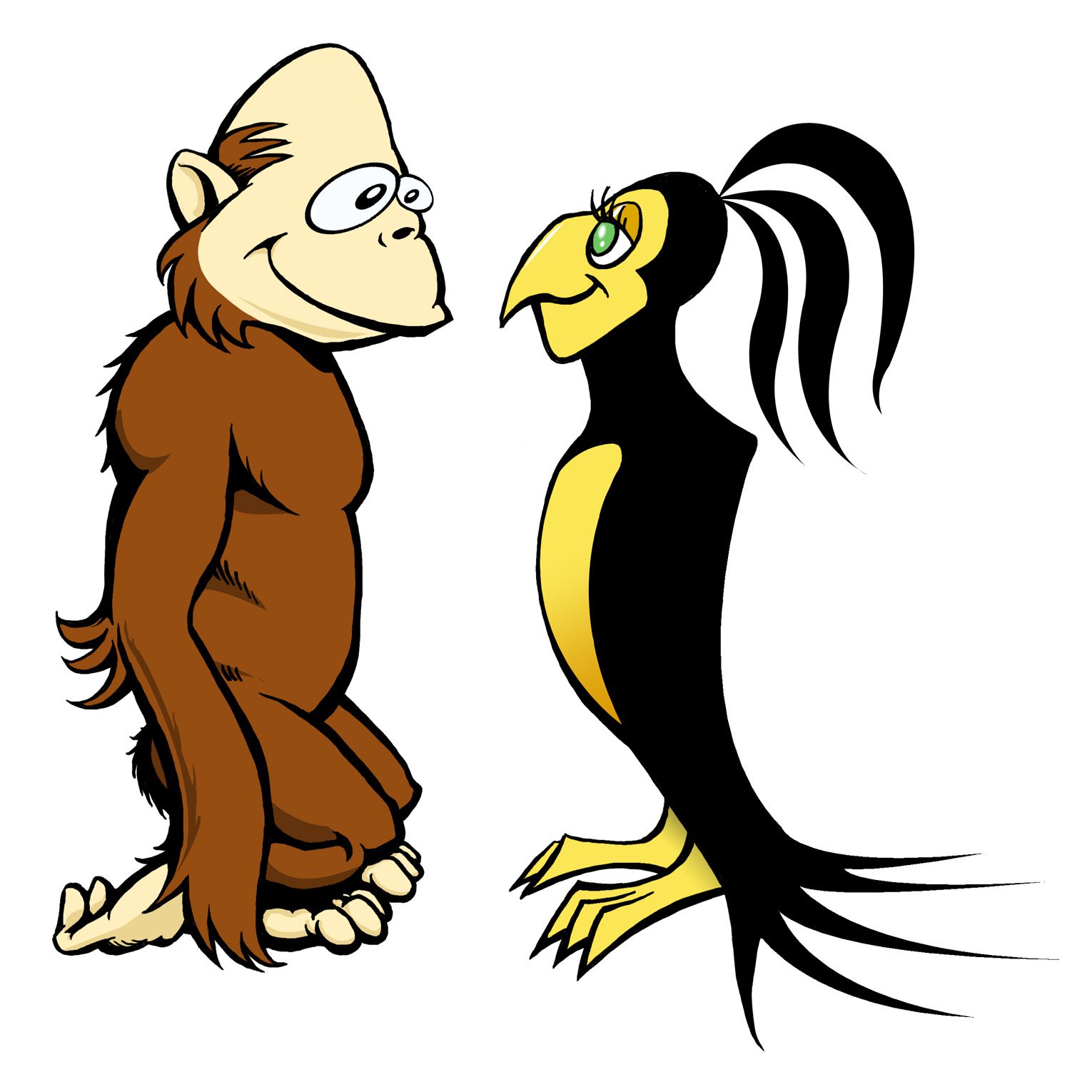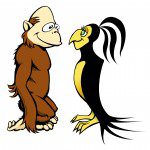
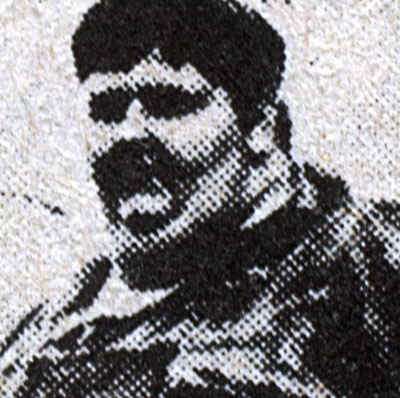 For kids who grew up in a certain era, this photo is probably more familiar than anything Diane Arbus or Ansel Adams may have shot.
For kids who grew up in a certain era, this photo is probably more familiar than anything Diane Arbus or Ansel Adams may have shot.
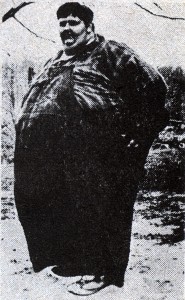 This, of course, is the world’s heaviest human on record that appeared in The Guiness Book of World Records back when it was sold in the tacky little ads in comic books. It was the print equivalent to a sideshow, and it was a sure way to completely disrupt any classroom it was brought in to. Kids were clamoring to see the gritty halftone photographs of record-breaking deformities and freaks of nature. Who cared about the sports statistics? Everyone wanted to know how much the fat guy weighed or how tall the tallest man was. I remembered it being confiscated from classmates more than once in order to quell excitement and reinstate order.
This, of course, is the world’s heaviest human on record that appeared in The Guiness Book of World Records back when it was sold in the tacky little ads in comic books. It was the print equivalent to a sideshow, and it was a sure way to completely disrupt any classroom it was brought in to. Kids were clamoring to see the gritty halftone photographs of record-breaking deformities and freaks of nature. Who cared about the sports statistics? Everyone wanted to know how much the fat guy weighed or how tall the tallest man was. I remembered it being confiscated from classmates more than once in order to quell excitement and reinstate order.
I never did own a copy of it, but I had seen it more than once. This image of the fat man used to sell the book bopped around for years – well after his big send off in the piano case.
This ad was from one of the comic horror magazines in the stash that Bill Cucinotta lent me. This was in the first issue of Tales of the Zombie from 1973. It was a mix of old and new stories printed mostly in black and white in a magazine format that did not adhere to the Comics Code Authority. There was more violence and the occasional nudity. The issue opens with a John Buscema illustrated story that features a tableau of naked women dancing around a fire. It screamed ADULT and was sold along with the detective magazines and the horror competitors from lower on the food chain like the comic I posted last week.
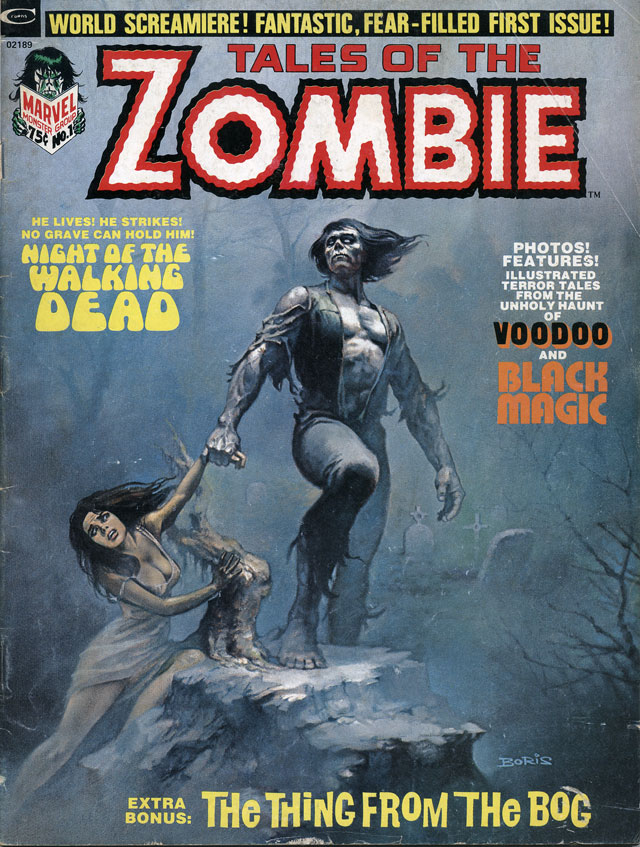 This had a terrific Boris Vallejo cover and contained a mix of mostly new stories featuring this particular zombie and a few old ones like a story written by Stan Lee and illustrated by Bill Everett. This weird cartoony style is from another era and stands apart from the usual Marvel House style as practiced by the aforementioned John Buscema.
This had a terrific Boris Vallejo cover and contained a mix of mostly new stories featuring this particular zombie and a few old ones like a story written by Stan Lee and illustrated by Bill Everett. This weird cartoony style is from another era and stands apart from the usual Marvel House style as practiced by the aforementioned John Buscema.
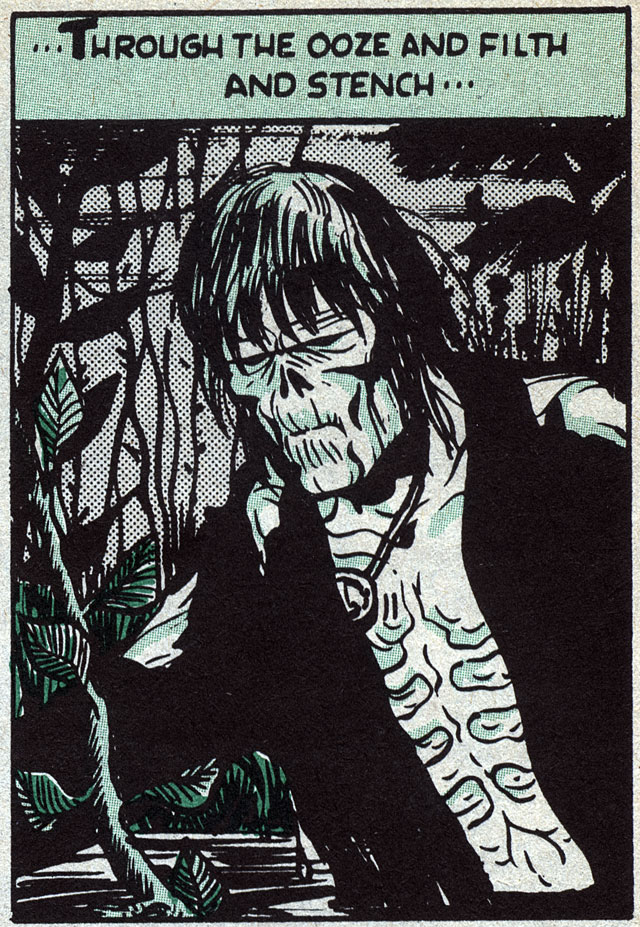 What was interesting about this particular issue of this magazine was a green spot plate was added to some of the pages. You can see screened values of the green in the panel above which I think really adds to the overall effect, and I’d like to see more comics printed in black and a spot. I’ve seen the technique used in alternative comic books, but never in Marvel. I’ve seen a number of other black and white comics magazines from this era, but this is the only one I’ve seen spot colors used in. They may have decided not to bother in order to save some money.
What was interesting about this particular issue of this magazine was a green spot plate was added to some of the pages. You can see screened values of the green in the panel above which I think really adds to the overall effect, and I’d like to see more comics printed in black and a spot. I’ve seen the technique used in alternative comic books, but never in Marvel. I’ve seen a number of other black and white comics magazines from this era, but this is the only one I’ve seen spot colors used in. They may have decided not to bother in order to save some money.


